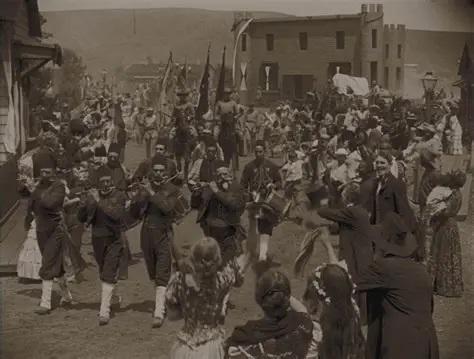Why Are Some American Historical Movies Heavily Criticized?

Movies that explore history carry great responsibility. They attempt to entertain while representing real events, real people, and complex social dynamics. American Historical Movies face the challenge of balancing fact and fiction. When they fail to meet expectations, critics and audiences react strongly. Many historical films are heavily scrutinized for inaccuracies, bias, or ethical concerns. Understanding why some of these movies receive harsh criticism requires examining their approach to storytelling, production, and cultural sensitivity.
The tension between fact and fiction
Creative liberties
Filmmakers often take creative liberties to make a story engaging. They condense timelines, combine characters, or invent dialogue. While these choices may improve narrative flow, they can distort historical truth. Audiences who know the actual events may feel betrayed or misled.
Simplification of complex events
History is rarely simple. Wars, political movements, and social changes involve multiple perspectives. American Historical Movies often reduce complexity to a single storyline. This simplification can create a skewed view of history, leading to criticism from historians and informed viewers.
Emotional impact versus accuracy
Some filmmakers prioritize emotional impact over factual accuracy. Dramatic scenes may be exaggerated or invented. While this can make a film more compelling, it also risks spreading misinformation. When audiences discover inaccuracies, the credibility of the film suffers.
Historical bias and perspective
Nationalistic or cultural bias
Many American historical films reflect national pride or cultural viewpoints. They often portray events in a way that favors certain characters or ideologies. This bias can alienate audiences or historians who expect a balanced representation.
Representation of marginalized groups
Criticism frequently arises when films misrepresent or ignore the experiences of minority groups. Slavery, indigenous history, and immigrant experiences are sometimes oversimplified or excluded. Films that fail to provide a comprehensive perspective are often labeled insensitive or biased.
Heroic mythmaking
American Historical Movies often create heroes out of real figures. While this approach enhances drama, it can distort history. Critics may argue that the film glorifies individuals while ignoring controversial or negative actions. This mythmaking contributes to heavy criticism from both audiences and historians.
Inaccurate depiction of events
Timeline manipulation
One common source of criticism is the alteration of timelines. Events may be shown out of order or combined for dramatic effect. While this can create a compelling story arc, it can also mislead audiences about the sequence and cause of historical events.
Fabrication of events
Some films invent entire incidents for narrative purposes. These fictionalized events can overshadow the real historical record. Critics often highlight these fabrications as a failure to respect historical truth.
Misrepresentation of facts
Even small factual errors can draw attention. Incorrect uniforms, dialogue, or historical settings may seem minor, but they affect authenticity. Audiences who value accuracy may respond with harsh reviews and commentary.
Controversial subject matter
Sensitive historical topics
Certain historical events remain sensitive, such as wars, slavery, or political assassinations. Films tackling these topics are more likely to face criticism. Misrepresentation, insensitivity, or dramatization of suffering can provoke strong reactions.
Political implications
Some films may reflect contemporary political views rather than historical reality. This can create controversy among audiences with differing perspectives. When a movie appears to rewrite history to align with current ideology, criticism intensifies.
Ethical storytelling
Critics often assess whether filmmakers handle difficult topics ethically. Exploiting tragedy for entertainment or oversimplifying complex moral issues can lead to accusations of irresponsibility.
Technical and artistic shortcomings
Poor research
Films that appear to lack rigorous research are often criticized. Viewers expect historical films to demonstrate knowledge of the period, culture, and events. When costumes, sets, or dialogue are inaccurate, it undermines the film’s credibility.
Weak storytelling
Even well-researched films can face criticism if the story is poorly told. Confusing narratives, inconsistent pacing, or shallow character development can detract from the historical message.
Unrealistic dramatization
Overly dramatic portrayals of events may alienate audiences seeking realism. American Historical Movies must balance cinematic spectacle with believability. When they fail, critics highlight the gap between fantasy and history.
The role of audience expectation
Educational purpose
Many viewers turn to historical films for learning. When a movie does not align with established history, it disappoints those expecting accuracy. This educational expectation amplifies criticism.
Emotional investment
Audiences are often emotionally invested in the stories depicted. Errors or biased portrayals can feel like personal affronts, leading to strong negative reactions.
Cultural memory
Films contribute to cultural memory and collective understanding of the past. Mistakes or misrepresentations can influence how society remembers events. This responsibility increases scrutiny and criticism.
Case studies of criticism
The Birth of a Nation
D.W. Griffith’s 1915 film is praised for technical innovation but heavily criticized for glorifying the Ku Klux Klan and misrepresenting Reconstruction. Its historical inaccuracies and racial bias make it one of the most controversial American films.
Pocahontas
Disney’s animated version of Pocahontas faced criticism for romanticizing colonial encounters and erasing historical realities. Critics highlighted its deviation from facts and its simplified portrayal of complex cultural interactions.
The Patriot
This film received criticism for exaggerating violence, altering events, and presenting a heavily dramatized view of the American Revolution. While entertaining, historians noted significant departures from historical truth.
Conclusion
Criticism of American Historical Movies arises from multiple factors. Creative liberties, bias, inaccuracies, controversial subject matter, and technical flaws all contribute. Audiences and critics expect films to respect the truth while delivering compelling narratives. Films that fail to balance these elements face intense scrutiny. Historical movies carry the responsibility of shaping cultural memory and influencing public understanding. When they succeed, they educate, entertain, and inspire. When they fail, they provoke debate, highlight ethical challenges, and remind filmmakers of the delicate relationship between art and history.
- Art
- Causes
- Crafts
- Dance
- Drinks
- Film
- Fitness
- Food
- Игры
- Gardening
- Health
- Главная
- Literature
- Music
- Networking
- Другое
- Party
- Religion
- Shopping
- Sports
- Theater
- Wellness



